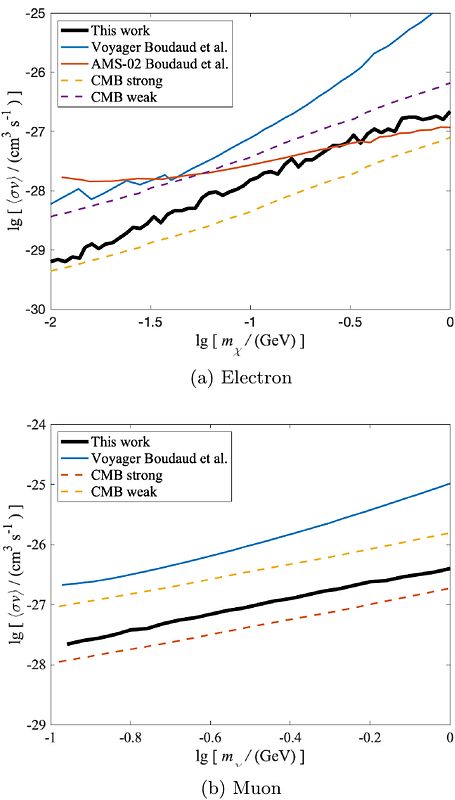Exploring sub-GeV Dark Matter Physics with Cosmic Ray and Future Telescopes

Exploring sub-GeV Dark Matter Physics with Cosmic Ray and Future Telescopes
Guansen Wang, Bing-Yu Su, Lei Zu, Lei Feng
AbstractIf sub-GeV Dark matter(DM) annihilates to the charged particles such as $e^+ e^-$, $\mu^+ \mu^-$, or $\pi^+ \pi^-$, it generates an additional source of electrons and positrons in the cosmic ray (CR) population within our Milky Way. During propagation, these secondary electrons and positrons undergo reacceleration processes, boosting their energies to the GeV scale. Observatories like AMS-02 can detect these high-energy particles, enabling constraints on the properties of sub-GeV DM. By analyzing AMS-02 electron and positron data, the 95\% upper limits on the DM annihilation cross-section have been established in the range of $10^{-28}$ to $10^{-27}$ cm$^3\,$s$^{-1}$, corresponding to DM masses ranging from 100 MeV to 1 GeV. Meanwhile, MeV telescopes will provide complementary constraints on DM properties by detecting photon emissions from such annihilation processes. Notably, the sensitivity of future MeV gamma-ray observatories is projected to approach or match the constraints derived from CR data.